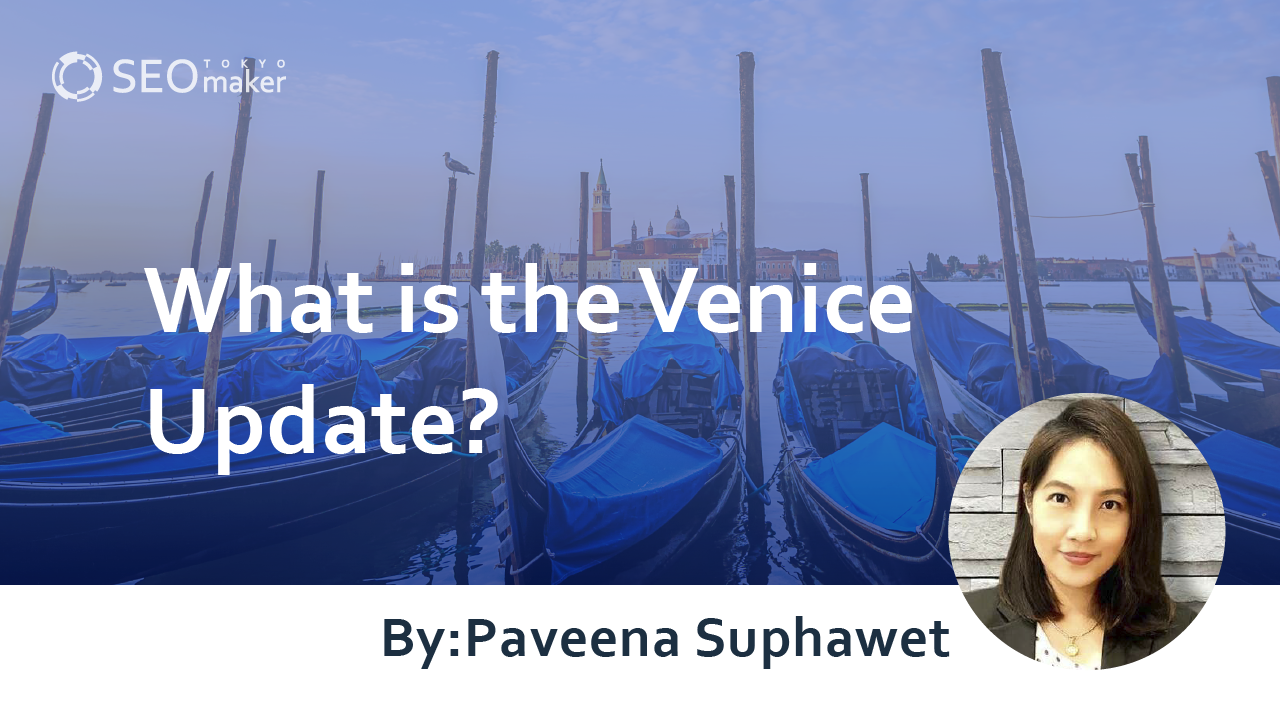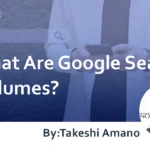What is the Venice Update? Explaining How to Handle Local Search
contents

Google’s search engine has undergone numerous updates over the years. One of these algorithm changes is known as the Venice Update.
However, many people might not be familiar with the details of the Venice Update. Gaining this knowledge can deepen your understanding of Google’s search engine. As a result, you will be able to implement correct SEO strategies.
In this article, we will explain the Venice Update. Tokyo SEO Maker, an SEO specialist media, provides a clear summary of what changed and the impacts of the Venice Update.
What is the Venice Update?
The Venice Update is a change made by Google to its search engine algorithm to incorporate the location information of search users into the search results.
With this update, even without including the name of a region, searching for a facility name will display a special listing section called the ‘local pack’ in the search results.
What is an Update?
An update literally means ‘renewal’ or ‘revision.’ In SEO terminology, it refers to changes made to Google’s search engine algorithm.
Google continuously strives to provide a more convenient search experience by adapting to the evolving needs of search users. The algorithm updates of the search engine are carried out for this purpose.
An algorithm is a set of rules used to display search results.
Related Article: Latest Core Update Information
Background of the Venice Update
The Venice Update was implemented due to the following developments.
- The rapid proliferation of mobile devices worldwide, beginning with the iPhone.
- Google’s enhancement of mobile search convenience.
1. The Rapid Proliferation of Mobile Devices Worldwide, Beginning with the iPhone
The iPhone, released by Apple Inc. in the United States in 2007, quickly gained popularity both domestically and internationally.
According to the 2017 edition of the ‘White Paper on Information and Communications in Japan’ published by the Ministry of Internal Affairs and Communications, the personal ownership rate of smartphones in Japan surged rapidly between 2011 and 2016. The specific trends in smartphone ownership are as follows.
|
Year |
Smartphone Ownership Rate |
|
2011 |
14.6% |
|
2012 |
23.1% |
|
2013 |
39.1% |
|
2014 |
44.7% |
|
2015 |
53.1% |
|
2016 |
56.8% |
Source: Key Points from the 2017 White Paper on Information and Communications in Japan
Additionally, the household ownership rate of tablet devices increased from 7.2% in 2010 to 34.4% in 2016. This rapid spread of mobile devices occurred globally.
2. Google Enhanced Mobile Search Convenience
With the proliferation of mobile devices, the use of search engines while on the go increased. Specifically, there was a rise in search needs such as using Google Maps to find destinations.
In response, Google undertook various initiatives to enhance the convenience of mobile searches.
Firstly, Google implemented the Pigeon Update in July 2014. This update aimed to display similar search results when users searched for the same regional names or facility names, such as ‘Tokyo’ or ‘downtown Tokyo.’ This measure ensured that searches like ‘Tokyo cafe’ or ‘downtown coffee shop’ would yield appropriate search results matching the search intent.
To further improve mobile search convenience, Google implemented the Venice Update in December 2014.
Impact of the Venice Update
Previously, users conducted local searches using combinations like region name + facility name. However, with the introduction of the Venice Update, searches with keywords closely related to a specific region started showing different results based on the searcher’s location. This change led to an increase in the use of local searches.
These changes had various impacts on both search users and website operators. Specifically, the following effects were observed.
- Search engines became substitutes for maps.
- Pages that previously ranked high with regional keywords saw reduced traffic.
- The importance of local SEO increased.
Search Engines Became Substitutes for Maps [Impact on Search Users]
Previously, people used paper maps to navigate to their destinations. However, with search engines assuming the role of maps, using search engines as a substitute for maps became commonplace. The Venice Update further enhanced this convenience.
For example, if you search for the keyword ‘coffee shop’ using a smartphone in Minato City, Tokyo (with location settings enabled on your device), the search results will display as shown in the image below.
The information displayed at this time includes coffee shop details and map data for Minato Ward in Tokyo. As a search user, you would select your preferred coffee shop and head to the location.
Access to pages that ranked highly for local keywords has decreased [Impact on Search Users]
After the Venice Update, there were changes in the number of visits to pages that previously ranked high for regional keywords.
With the introduction of the Venice Update, the exposure of a section called the local pack increased. The local pack displays facility information and map details during a local search. On the other hand, information displayed as usual search results is called organic search results.
The increased exposure of the local pack means that organic search results become less prominent in the search results. Consequently, the number of visits to websites that previously ranked high for regional keywords decreased.
Increased Importance of Local SEO [Impact on Site Operators]
Due to the Venice Update, searching for a facility name alone now displays the local pack in the search results. Therefore, it has become crucial for website operators to ensure their web pages appear in the local pack. This is achieved using a method known as local SEO.
Local SEO involves setting composite keywords that include the region name to achieve higher rankings in organic search results and inclusion in the local pack. For example, Tokyo SEO Maker (this site) has implemented local SEO. As a result, as shown in the image below, Tokyo SEO Maker’s information is included in the local pack.
Related Article: What is Local SEO?
Strategies to Address the Venice Update
The Venice Update increased the demand for local searches. Hence, the following local SEO strategies have become essential.
- Registering with Google Business Profile
- Setting regional keywords
- Maintaining up-to-date information on the site
- Increasing reviews and ratings
Refer to the linked article for a detailed guide on implementing local SEO.
Related Article: What Should Be Done for Local SEO?
Websites That Should Implement Local SEO
Websites for businesses with physical locations should focus on local SEO.
The enhanced functionality of local searches has led to an increase in search users looking for destinations via web browsers on smartphones and tablets. For companies with physical locations, this represents a significant societal change. For instance, having a website listed in the local pack can attract consumers to the actual store.
Specifically, companies in the following industries should ensure they are leveraging local SEO effectively
- Restaurants
- Beauty salons
- Clinics
- Real estate
- Construction companies
- Law offices
Frequently Asked Questions about the Venice Update
We present common questions about the Venice Update in a FAQ format.
Q: What does the Venice Update mean?
Answer: It refers to an update to Google’s search engine.
The Venice Update made it so that the search results in the search engine now reflect the location information of the user. This update was driven by the increasing number of users using search engines on mobile devices. Google has implemented various updates to enhance the convenience of mobile searches. The Venice Update is one of these measures.
Q: When was the Venice Update implemented?
Answer: The update was implemented in December 2014.
Q: What is the difference between the Venice Update and the Pigeon Update?
Answer: The impacts they had on the search engine differ.
The Pigeon Update aimed to display similar search results even when using synonyms like ‘Tokyo’ or ‘downtown Tokyo.’ In contrast, the Venice Update aimed to reflect the user’s location information in the search results.
However, both updates were implemented to enhance the convenience of local searches on mobile devices. While they had different impacts on the search engine, they share a common goal and are closely related updates.
Related Article: What is the Pigeon Update?
Summary
Google’s search engine has undergone repeated updates to improve user convenience. The spread of mobile devices around 2010 significantly impacted the needs and specifications of search engines. The Venice Update was an update introduced as part of these mobile measures. From the perspective of website operators, it is crucial to understand these changes in Google’s search engine. Based on this understanding, consider the necessary SEO strategies to implement now.










![What is a Description? Explaining the Meaning, Writing Style, and Changing Word Count – [2023 Edition]](https://www.switchitmaker2.com/en/wp-content/uploads/2024/09/what-is-description.webp)










